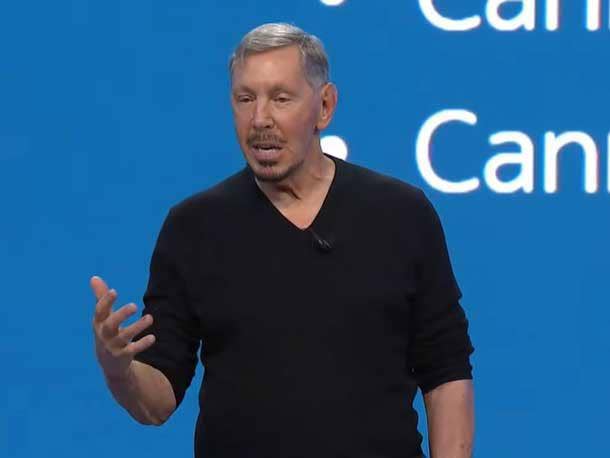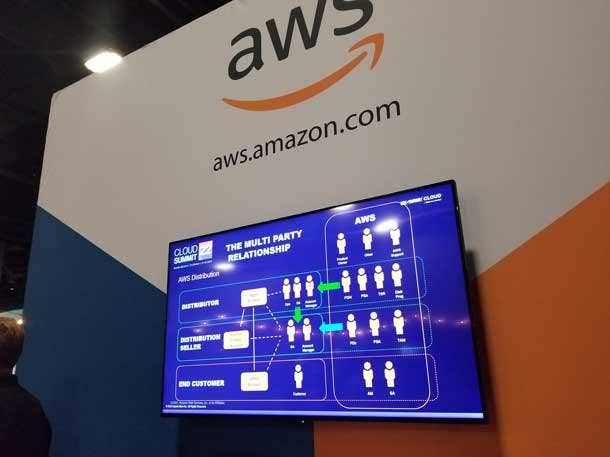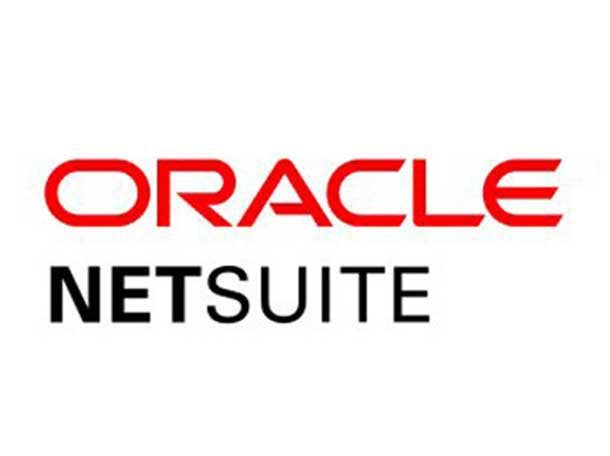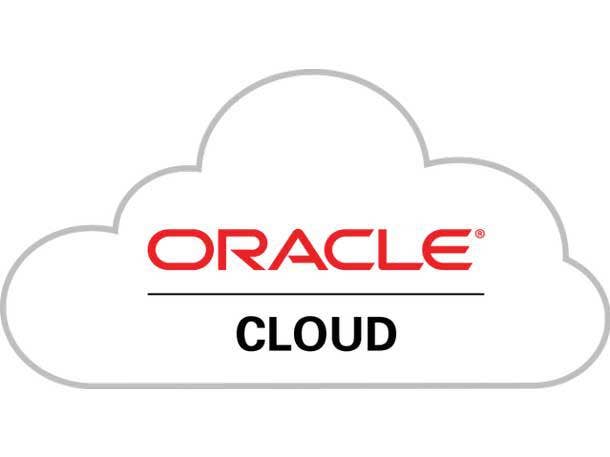Oracle’s Ellison: ‘We Have A Much Faster Network Than Anybody Else’
‘The most interesting thing is we have a much faster network than anybody else,’ Oracle co-founder and CTO Larry Ellison says during his company’s earnings call.

The speed of Oracle’s networks is what has helped the database and cloud products vendor win new customers and carve out a niche around work involving artificial intelligence and machine learning, co-founder and Chief Technology Officer Larry Ellison told listeners on the company’s quarter earnings call this week.
Although Ellison didn’t mention names, it’s likely that he was referring to No. 1 cloud vendor Amazon Web Services (AWS). Part of Oracle’s secret sauce is the RDMA (remote direct memory access) network used to connect Oracle’s computers, Ellison said on the phone call.
“The most interesting thing is we have a much faster network than anybody else,” Ellison said. “We have a fundamentally different network than any of the other cloud providers. … We just run much, much faster, much more reliably than they do. And it‘s a fundamental advantage that they can’t compete with unless they rebuild their cloud from scratch.”
[RELATED: ‘Exploding’ AI, ML Demand Helps Oracle Surpass $12 Billion In Q2 Revenue]
Larry Ellison Comments On Oracle Q2 Earnings
CRN has reached out to Oracle and AWS for comment.
Ellison also discussed his vision for two areas where he wants Oracle to dominate in the future – national health care systems and business-to-business (B2B) commerce automation that feels like ordering items from Amazon.com or Walmart.com.
“We have very strong partners in finance, insurance and logistics,” Ellison said. “So we can completely automate the entire transaction, where B2B transactions begin to look like B2C transactions. They’re fully end-to-end automated, and that’s a huge new business for us and our partners.”
Two investment firms authored positive reports on Oracle’s performance despite some slight deceleration in growth.
Oracle’s cloud business dropped to 27 percent growth year over year from 29 percent reported the prior quarter, according to a Tuesday report from KeyBanc. Strategic back office software-as-a-service slowed to 26 percent growth from 33 percent the prior quarter.
And the firm voiced “some concern” about Oracle’s lower gross margin, free cash flow and growing capital spending – Oracle could end the year with $9.2 billion in spending to meet Oracle Cloud Infrastructure (OCI) demand.
Still, KeyBanc is “increasingly confident in the top-line outlook,” given the acceleration in remaining performance obligation (RPO) growth year over year – 28 percent this most recent quarter compared to 22 percent the prior quarter – and the company beating Wall Street expectations with its $12.3 billion in total for the quarter, which ended Nov. 30.
In its report Tuesday, Credit Suisse said that the 28 percent RPO growth “underscores customers’ increasing commitments to Oracle Cloud” and predicted that Oracle could reach third or fourth in the platform-as-a-service (PaaS) and infrastructure-as-a-service (IaaS) market and No. 2 in software-as-a-service (SaaS).
“Whereas the focus of change following the Global Financial Crisis was at the applications layer with the adoption of SaaS, the focus of change is now on the infrastructure and platform layers of the stack,” according to the Credit Suisse report. “We believe (1) 2023 will be defined by businesses moving forward on multi-year, strategic cloud-first transformation roadmaps and (2) expect Oracle to be a key beneficiary of this accelerating trend given its database leadership and ‘down-the-stack’ strategy.”
Despite these cheery reports, Oracle’s stock remained mostly flat. After a 5 percent boost to Oracle’s stock price after the market closed Monday, the stock fell to $80.48 a share Tuesday after the market closed – in all, down about 1 percent from where the share price stood before the earnings call.
Here’s what else Ellison had to say this week.

Oracle Reaches 22K Infrastructure Customers
During Q2, we signed multiple customers to contracts exceeding $1 billion. Infrastructure contracts exceeding a billion dollars. … Given that that‘s been added to our backlog, we expect our infrastructure business to continue to grow very, very strongly into the future.
We now have 22,000 infrastructure customers. We have a total of 55 regions – that‘s public regions plus national security regions and the other kinds of regions.
And that‘s more than AWS or Microsoft or anybody, which may surprise some people.
Customer Wins Reflect Oracle Cloud Quality
Let me just start naming specific customers and give you a flavor. I‘m gonna name large customers, small customers. I’m going to focus a little bit on a bunch of international customers to let you know
that our investment in data centers all over the world is really paying off.
Our customers include … Tokyo Stock Exchange, we’re the only ones running a major stock exchange. And Tokyo‘s not the only one. Because our cloud is very secure and extremely reliable. It doesn’t go down.
In fact, my favorite quote from the big phone company in the United States was, ‘The difference between Oracle‘s cloud and the other clouds is simply that Oracle Cloud doesn’t go down.’
I think it‘s a very important issue when you have enterprise applications like a stock exchange, where you can’t ever go down.
Fujitsu is another big customer. Vodafone, phone companies, similar problems. If you‘re a phone company, the phone system can’t go down. … Nvidia has moved, and a bunch of others have moved lots of AI – artificial intelligence – and machine learning workloads to the Oracle Cloud because it turns out we’re really good at that.
We’re better at that than any of the other clouds, which may surprise some people. … HomeServe PLC in the U.K., a government agency, is moving the Autonomous Transaction Processing system.
They‘re not just moving an existing Oracle database to the cloud. They’re upgrading from our on-premises Oracle database to our autonomous database, which is only available in the cloud.

Taking On AWS, Partnering With Microsoft
I mentioned a couple of calls ago that we have a new version of our MySQL open source database. And we added a new ultra-fast query processor called HeatWave to MySQL. And that‘s doing extremely well.
We have a number of companies doing that migration. Medallia … Credit Club. It‘s a long list of people that are moving to MySQL to take advantage of the fact that our query processor in our version of MySQL is 100 times faster. I really mean that.
We have all the benchmarks. We publish all the benchmarks, and we publish the source code of the benchmarks so you can duplicate those results – 100 times faster for queries than the Amazon equivalent called Aurora – Amazon‘s version of MySQL. … Our partnership with Microsoft Azure is going extremely well.
We have a number of companies running applications in Azure. And then Azure is connected to OCI, so the database is in OCI and the application is in Azure.
Belgium Railways is one. Honeywell in the United States. Petronas, the big energy and utility company. … but that multi-cloud system is doing extremely well. … And we think that is the future of cloud. We think the future of cloud is not four walled gardens – AWS, Microsoft, Google and Oracle.
We think those clouds are all going to interconnect. And then customers will pick the most appropriate service for their particular needs and mix and match between the clouds. …

AI, Health Care Differentiators for OCI
Lambda – which is a big AI, machine learning specialist company – is moving the bulk of their workloads to OCI using Nvidia GPUs and our fast – our very, very fast network – to interconnect them.
And this is a pattern. Lambda is doing that. … Nvidia themselves are doing that. So you’re seeing a lot of machine learning and artificial intelligence workloads moving from other clouds to OCI because we‘re faster.
And again, in the cloud business, faster – when you charge by the minute, faster means cheaper. … Austin transit partnership, a municipality in Texas. They are an interesting customer because they‘ve been using Oracle ERP and EPM and our applications for a long, long time.
Now they‘re moving, they’re moving their infrastructure to OCI. … Oxford Nanopore, a big gene sequencing company, is moving from AWS to OCI, where they‘re going store gene sequencing.
But they‘re not only just storing sequences in OCI. They also do analytics to figure out if what they’ve sequenced is a new version of COVID-19 or another pathogen, if it’s a pathogen they‘ve never seen before. Extremely important application for world health.

11K Fusion, 30K NetSuite Customers
We‘re just winning in the back office. … We have 11,000 Fusion ERP and HCM customers alone in applications. Just Fusion customers, we have 11,000 now.
We have probably close to 30,000 NetSuite customers on top of that, so we have a lot of customers in applications. We‘ve been in the applications cloud business for longer than then we’ve been in the infrastructure cloud business.
We‘re extremely strong in health care … But it’s not just the clinical providers that are using our systems. The payers, the healthcare payers. So, again, as we tackle health care in conjunction with our Cerner acquisition, we‘re not just automating providers.
We’re also automating payers. We’re also automating pharmaceutical companies as they do clinical trials. We‘re trying to automate the entire ecosystem, not just a fraction of it. … Emirates Health Services, big provider win where we beat SAP.
Cross Country Health Services, where we beat Workday and SAP. … It is the entire healthcare infrastructure that we are focusing on as we try to automate health care systems around the world.

Oracle: An ‘Amazon’ For B2B Commerce?
What you‘re going to see in Oracle ERP with our strength in the banking sector is we will be offering loan origination for B2B commerce.
One of the things we‘re doing with the new version of Oracle ERP is if you’re a customer that‘s buying something and you have Oracle ERP and you are a company that’s selling something and you have Oracle ERP, the way that transaction will occur, it will be entirely automated within the cloud.
So … the buying ERP system will submit a purchase order to the selling ERP system, and if you need to borrow money, we will originate a loan with one of our banking partners.
If the product has to be shipped, we will schedule the shipping and track the shipment with one of our logistic partners. And our ambition here is to completely automate B2B commerce between buying and selling companies that are running Oracle Cloud ERP and manage all of the financing and insurance and logistics associated with that transaction.
We do a really good job, I think, of automating B2C transactions. Amazon does that extremely well. Walmart does that extremely well.
But we don‘t do a great job of automating B2B transactions. And … Oracle’s ambition is to do that, and we‘re in a great position because we are so strong in cloud ERP.
So it‘s an Oracle … procurement system on one end of that transaction. It’s an Oracle order management system on the other end of that transaction. We have very strong partners in finance, insurance and logistics. So we can completely automate the entire transaction, where B2B transactions begin to look like B2C transactions.
They’re fully end-to-end automated, and that’s a huge new business for us and our partners.

Oracle’s RDMA Network
The most interesting thing is we have a much faster network than anybody else. We have a fundamentally different network than any of the other cloud providers. We have what‘s called an RDMA (remote direct memory access) network that we had to build … One of the big differences between the Oracle database and other databases is that, the Oracle database, a single application could run on multiple computers.
If one of those computers would fail, the application would keep running. It was fault tolerant. It would tolerate a failure of a machine. Other people don‘t have that. … If we’re going to have a cluster of four machines running a single database app, we have to make that network between those four machines very fast. And that‘s called an RDMA network.
That means that one computer can immediately access the memory of another computer without going through an interrupt. It‘s a very fast way to interconnect to computers and have them act as a group.
We build that for our entire cloud. So we can run our database, our Oracle Real Application Cluster database on any of the computers in our cloud.
Now, because we built this hyper-fast network, it turns out it has more utility than just running the Oracle database. So if you‘re running a cluster of computers doing a simulation, a car crash simulation – that was one of the first applications people noticed ran much faster on Oracle.
And now a much bigger application they’ve noticed that runs much faster on Oracle was neural networks and machine learning workloads run much faster on Oracle.
So because our network is just intrinsically much faster – and remember there are security and reliability advantages to go along with that. … All of our computers actually have two networks.
I‘m not going to go into all the details, but our computers are fundamentally different than (that of) any other cloud company.
We have two networks, one of which … interconnects all of our customers’ computers. And the other, which is, if you will, our control network and computers that run our cloud control software, which is isolated from the customer software, so the customer can‘t tamper with our cloud control software.
They can‘t get control of it. And we can’t see the customer‘s data. That is unique to Oracle. But because we have the two networks, and because one of the networks is RDMA, we just run much, much faster, much more reliably than they do.
And it‘s a fundamental advantage that they can’t compete with unless they rebuild their cloud from scratch.

Cerner Update: Oracle Takes On Health Care
What Cerner did, primarily, in competition with Epic, is they automated hospitals.
And, yes, we want to automate hospitals and clinics and doctor‘s offices and do that. We certainly want to automate providers. But we’re layering on top of that. … We are doing national public health systems.
I mentioned the Oxford Nanopore, that‘s an early warning system to detect the next pathogen that could lead to a pandemic.
These global public health systems need to be built. And we are in discussions with not companies, but countries about building and deploying global early warning systems so we‘re going to detect the next pathogen that threatens to turn into a pandemic.
We can catch it early enough that we can prevent it from being a pandemic – God forbid there is another pandemic – that we have up-to-the-minute, up-to-the-second data about how the country‘s infrastructure is managing the hospital hospitalization rates and vaccination rates and all of those things so we can better deploy and manage our resources during a pandemic so we don’t have a repeat of the things that went on during COVID-19.
So I expect … that we will be signing contracts with a number of countries to build these national systems. And these contracts are enormous. … And there will be several of them. … The scale of this health care opportunity is unprecedented.
But so are the responsibilities that go along with it. We have to – we as humanity have to do a better job of delivering health care to people than we have done historically.
And we can never have a repeat of the COVID-19 pandemic. And I think there is this worldwide sense of urgency and national consciousness about getting a new generation of systems out there that help us first prevent and then manage our health care – prevent a pandemic and better manage our healthcare systems.
As far as I know, Oracle is the only company in the world that‘s trying to address this issue. And we’re about to sign up a number of countries that will work with us on doing just that.